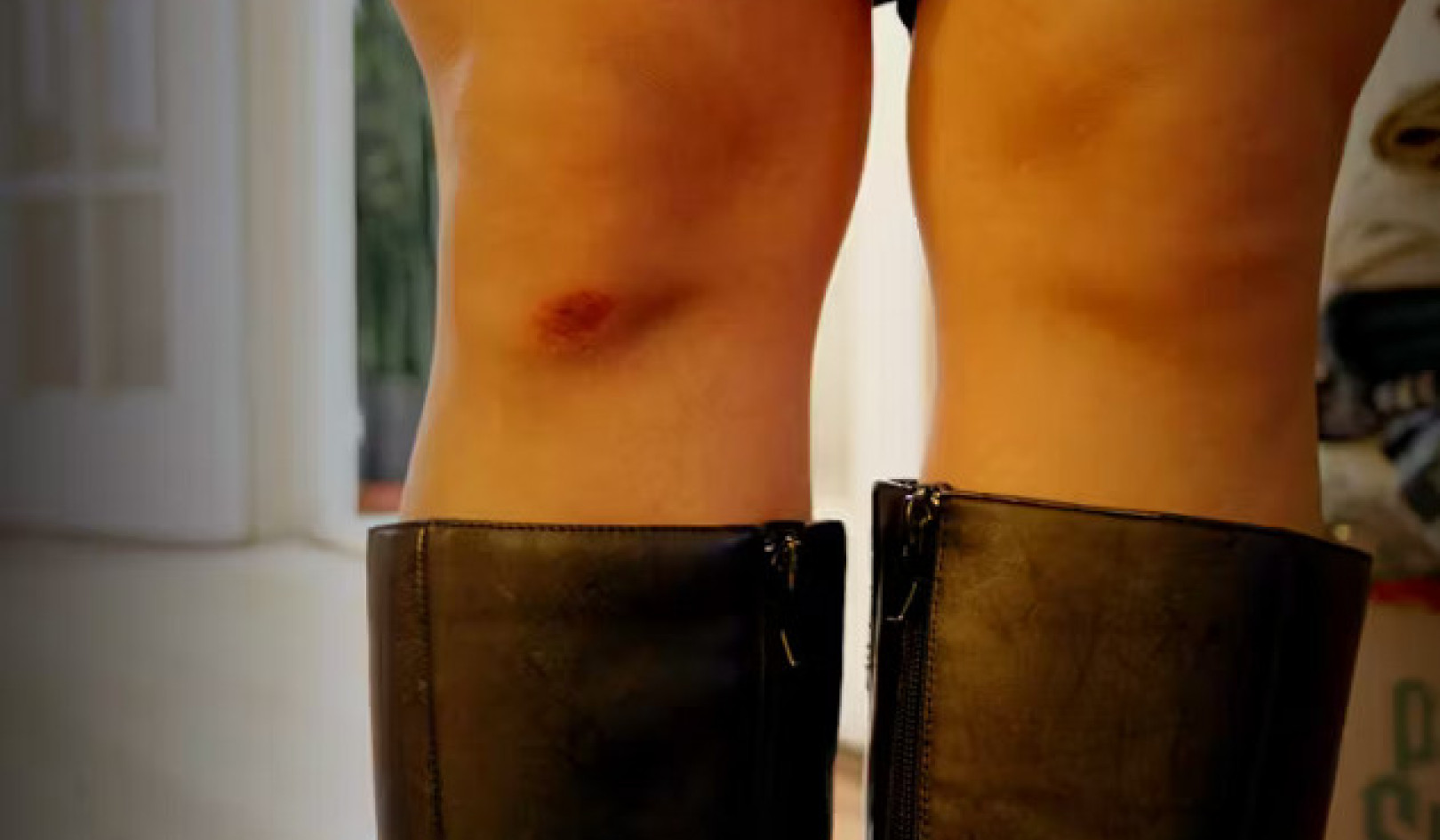
Image by Avi Chomotovski
In some respects cancer is to industrialized countries today what tuberculosis was to the 18th and 19th century: a major cause of death and misery which defeats the best efforts of conventional medicine. Rather ironically the way cancer has been, and continues to be, managed is very similar to the way 'surgical tuberculosis' was dealt with a century ago -- before heliotherapy was rediscovered. [Heliotherapy is the treatment of disease by exposing the body to sunlight.] Then, as now, all of the emphasis was on removing the manifestation of the disease and not on enhancing the patient's ability to overcome it.
The cure for cancer remains elusive despite the fact that billions have been spent on research over the last thirty years. Indeed, there can be few areas of scientific research that have had more resources thrown at it and have yielded such modest results. Although from time to time there are well-publicized breakthroughs in laboratory-based cancer research, the benefits to cancer patients are not clear-cut.
Alternative Therapies for Cancer
As far as conventional medicine is concerned, the preferred methods treating cancer are surgery, radiation, or chemotherapy. Cancer cells are removed or destroyed and no attempt is made to eliminate the disease by strengthening the body's natural defense systems. Indeed, chemotherapy and radiation do exactly the opposite. Against this background it is understandable that people are turning to non-interventionist 'conservative' techniques as an alternative, or supplement, to surgical and chemical remedies.
A number of alternative therapies have been developed for cancer which claim to use the body's own healing powers rather than drugs or machine-medicine, with varying degrees of success. Sunlight has been used to treat cancer and there is evidence that goes back over half a century which suggests that sunlight exposure prevents deep-seated cancers from developing.
Sunlight and Cancer: The Pros and Cons
Although sunlight can cause basal cell and squamous cell skin cancers in susceptible people, there is a very good correlation between sunlight exposure and low incidence of internal cancers. Death rates from cancer increase with distance from the equator. Or, to put it another way, the nearer you live to the equator the less chance you have of developing an internal cancer.
This association has been clearly demonstrated in a number of studies such as the one carried out in 1941 in the United States by Dr Frank Apperly. He examined the statistics on cancer deaths across North America and Canada and found that compared with cities between 10 and 30 degrees latitude, cities between 30 and 40 degrees latitude averaged 85 per cent higher overall cancer death rates; cities between 40 and 50 degrees latitude averaged 118 per cent higher cancer death rates, and cities between 50 and 60 degrees latitude averaged 150 per cent higher cancer death rates.
Dr Apperly also looked at the relationship between sunlight, ambient temperature and skin cancer. He concluded that sunlight produces an immunity to cancer in general and, in places where the mean temperature is less than about 5.5? C, or 42? F, even to skin cancer. However, at mean temperatures higher than this, solar radiation causes more skin cancer despite the increased general immunity to the disease.
So, the nearer one is to the equator, the less chance there is of developing cancer of the breast, colon, lung, etc. There is an increased risk of developing skin cancer but this decreases in cooler climates with mean temperatures below 5.5? C, or 42? F. Dr Apperly appears to have been the first scientist to investigate the relationship between ambient temperature and skin cancer. He also suggested, as others have done before and since, that exposure to sunlight might be an effective way to reduce the number of deaths from internal cancers. He concluded his review of the statistics as follows:
A closer study of the action of solar radiation on the body might well reveal the nature of cancer immunity.
There have been a number of scientific studies in the last 20 years which support the view that sunlight can inhibit cancer, and it is clear that the mortality and incidence of breast cancer and colon cancer in North America and other areas of the world increases with increasing latitude. In 1992, Dr Gordon Ainsleigh published a paper in the journal Preventive Medicine in which he reviewed 50 years worth of medical literature on cancer and the sun. He concluded that the benefits of regular sun exposure appear to outweigh by a considerable degree the risks of squamous-basal skin cancer, accelerated aging, and melanoma. He found trends in epidemiological studies suggesting that widespread adoption of regular moderate sunbathing would result in approximately a one-third lowering of breast and colon cancer death rates in the United States. Colon cancer and breast cancer are the second and third leading causes of cancer deaths in North America and Dr Ainsleigh estimated that about 30,000 cancer deaths would be prevented each year if moderate sunbathing on a regular basis became the norm.
The subject was reviewed again in another American paper published in 1995, entitled Sunlight - Can It Prevent as well as Cause Cancer? The authors were concerned that medical research was largely directed towards investigating the harmful effects of sunlight on fair-skinned individuals, and not on people with dark skin who lived in, or had emigrated to, parts of the United States where the incidence of sunlight was low. They concluded from their review that although there was no definitive proof that sunlight and vitamin D protect humans from the development and progression of carcinomas of the breast, colon or prostate, there were good grounds for questioning any broad condemnation of moderate sun light exposure. They felt that for some Americans -- those with heavily pigmented skin -- lack of solar radiation could be rather more of a problem than too much: that it may well contribute to the high incidence of prostate cancer in black American men and the particularly aggressive progress of cancer of the breast in black women. The final sentence of this paper is as telling, in its own way, as the one at the conclusion of Dr Apperly's paper of 1940 quoted above. The authors suggested that the:
... study of the beneficial effects of sunlight on cancer progression should be removed from the realm of mysticism and thrust in to the scientific arena of experimental studies.
Vitamin D Deficiency
Vitamin D performs a number of important functions besides its role in mineral absorption. By regulating the level of calcium in the blood Vitamin D influences the nervous system, as calcium aids nerve impulse transmission and muscle contraction. It influences the secretion of insulin by the pancreas and plays an important part in regulating the body's immune system. Vitamin D is also involved in the growth and maturation of cells: in laboratory experiments the biologically active form of vitamin D has been shown to inhibit the growth of cancer cells.
Significantly, recent laboratory research confirms that vitamin D deficiency may be an important factor in the emergence of cancer of the breast as well as cancer of the colon, prostate and, to a lesser extent, leukemia, lymphoma and melanoma. Scientists are getting to grips with the mechanisms which account for vitamin D's capacity to retard the progress of cancer. So, the findings of epidemiological studies of sunlight and cancer are supported by work in the laboratory.
There are trials under way to see if the vitamin D can be used to treat prostate cancer and other malignancies. There do not, however, appear to have been any major clinical trials to establish whether sunlight can be used in cancer therapy, although there have been reports of its use.
©1999. Reprinted with permission of the author.
Published by Findhorn Press. www.findhornpress.com
Article Source
The Healing Sun: Sunlight and Health in the 21st Century
by Richard Hobday.
 The light and heat from the sun are indispensable to all nature. Humanity is also part of nature and needs sunlight for health and well being, for vitality and happiness. This book explains how and why we should welcome sunlight back into our lives--safely! It shows how sunlight was used to prevent and cure diseases in the past, and how it can heal us and help us in the future.
The light and heat from the sun are indispensable to all nature. Humanity is also part of nature and needs sunlight for health and well being, for vitality and happiness. This book explains how and why we should welcome sunlight back into our lives--safely! It shows how sunlight was used to prevent and cure diseases in the past, and how it can heal us and help us in the future.
Info/Order this book.
About the Author
 Richard Hobday, MSc, PhD is a member of the British Register of Complementary Practitioners and has studied traditional Chinese Medicine and Chinese exercise systems in China. Dr. Hobday has many years experience of solar design in buildings and is a leading authority on the history of sunlight therapy.
Richard Hobday, MSc, PhD is a member of the British Register of Complementary Practitioners and has studied traditional Chinese Medicine and Chinese exercise systems in China. Dr. Hobday has many years experience of solar design in buildings and is a leading authority on the history of sunlight therapy.




























